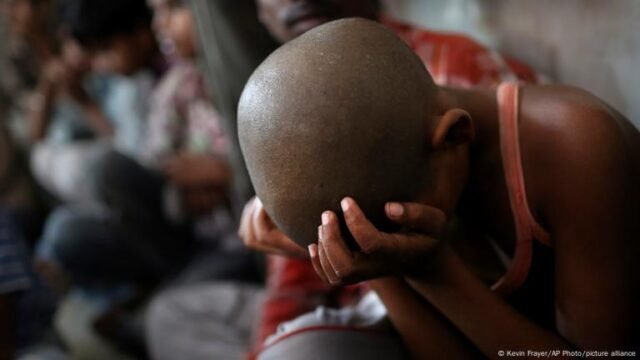The reality of conflict in Nigeria is no longer just about destroyed communities, displaced families, or disrupted markets — it is also about the silence inside classrooms. According to new United Nations figures, more than 15,000 schools across West and Central Africa have closed because of insecurity, and Nigeria accounts for some of the highest numbers. The closures have left over 5 million Nigerian children out of school, unable to continue their education.
For parents, teachers, and children, the situation is more than numbers on a UN report. It is about daily fear, broken dreams, and futures under threat. Busola Rafiat Ojo-oba, a Lagos-based social worker and specialist on gender-based violence, warns that “the figures we see today may just be scratching the surface — many children, especially girls, may never return to school even when stability comes back.”
Table of Contents

Why So Many Schools Are Being Lost to Conflict
The collapse of education in conflict-affected areas has many faces.
- Violence and insurgency: In the northeast, Boko Haram’s long campaign against schools still casts a shadow. Many communities have seen schools burnt down or abandoned. Once shut, many have not reopened years later.
- Kidnappings and insecurity: In Zamfara, Niger, and Kaduna states, parents often keep children at home for fear of abduction. The wave of mass kidnappings from schools in recent years has left a deep scar.
- Poverty and displacement: Families displaced from villages must first worry about food and shelter. Education becomes a secondary priority, even though its absence prolongs the cycle of poverty. Teachers, too, are displaced, creating gaps that are difficult to fill.
- Weak response capacity: While state governments and NGOs have tried to establish learning centres in internally displaced persons (IDP) camps, many are temporary. Insecurity and poor funding mean they cannot meet the scale of need.
One father in Katsina put it plainly: “I would rather my daughter be safe at home than risk the road to school every morning. But when she asks me why her cousins in Abuja are learning while she stays at home, I have no answer.”

Consequences of Conflict Beyond the Classroom
The effect of these closures is already shaping Nigeria’s social and economic future.
First, there is the loss of years of learning. A child out of school for three or four years struggles to reintegrate into formal education. Some never return.
Second, there are risks of exploitation. Young boys are vulnerable to recruitment into armed groups, while young girls face early marriages, teenage pregnancy, or sexual abuse. The classroom, which should be a place of protection, disappears — leaving children exposed.
Third, the crisis widens inequality. Children in Lagos or Abuja can turn to private schools, online classes, or alternative learning systems. For those in Borno, Zamfara, or Sokoto, options are almost non-existent. This deepens the gap between rural and urban Nigeria.
Finally, there is the economic cost. Every child out of school today reduces the human capital of tomorrow. Experts warn that a generation without adequate education means reduced national productivity, higher unemployment, and weaker civic participation. In short, Nigeria cannot grow while millions of its children remain out of school.
What Needs to Change
Despite the grim picture, solutions exist. Experts and activists insist that Nigeria must act urgently if it wants to prevent a generational setback.
- Safety first: Government must secure school environments. Safe corridors for pupils and teachers, community-based vigilance groups, and stronger security investment in rural schools are vital. Without safety, no parent will willingly send their child to school.
- Flexible learning options: During the COVID-19 pandemic, radio and television lessons became lifelines. In conflict zones, such approaches — along with mobile classrooms or solar-powered learning kits — can keep education alive until stability returns.
- Support for vulnerable groups: Girls and displaced children need targeted programmes. Incentives such as free meals, catch-up classes, and psychosocial support help reduce the risk of permanent dropout.
- Sustainable funding: Education in emergencies should not depend only on donor funds. Federal and state governments must treat it as a budget priority, not a side project.
UNICEF and several Nigerian NGOs are piloting such approaches in Borno and Adamawa, but coverage remains far below demand.

A Call for Urgent Action
Nigeria’s challenge is not just about keeping schools open — it is about keeping hope alive. Each closed classroom represents thousands of dreams deferred, and each out-of-school child signals a weakening of the nation’s future.
If conflict continues to dictate the rhythm of education, Nigeria risks creating a lost generation. But with bold policies, serious investment, and community cooperation, the story can change. The choice is now between a future where millions of children remain trapped in the cycle of insecurity and poverty, or one where education becomes the ladder out of it.
Join Our Social Media Channels:
WhatsApp: NaijaEyes
Facebook: NaijaEyes
Twitter: NaijaEyes
Instagram: NaijaEyes
TikTok: NaijaEyes
READ THE LATEST EDUCATION NEWS





